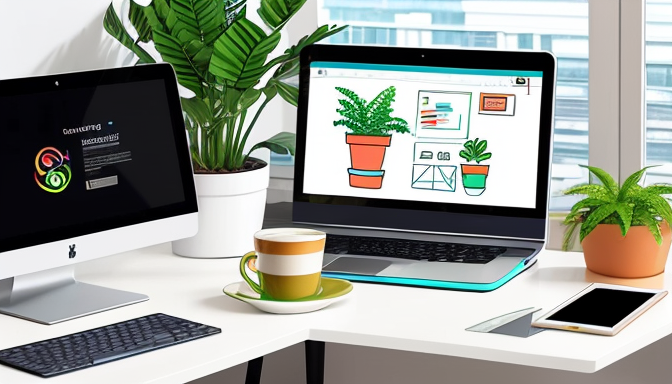When diving into the world of Joomla, it’s easy to get caught up in the excitement of creating a stunning website. However, there are some design mistakes that can turn your masterpiece into a frustrating experience for users. Imagine walking into a beautifully decorated room, only to trip over clutter—the same principle applies to web design!
One of the most common pitfalls is neglecting the backend settings. Properly managing these settings is crucial for a seamless user experience. For instance, if your menus are poorly organized or your content is difficult to navigate, visitors will quickly lose interest. Think of your website as a map; if it’s not clear and easy to follow, users will get lost and abandon ship.
Additionally, overlooking user roles can lead to significant issues. Ensuring that permissions are set correctly allows for a smoother workflow and maintains security. It’s like assigning roles in a play; everyone needs to know their part to make the show successful!
Lastly, don’t underestimate the impact of system configurations. A well-configured Joomla site not only boosts performance but also enhances visual appeal. So, take the time to review your settings and make necessary adjustments. Remember, a well-designed website is not just about aesthetics; it’s about creating a functional and inviting space for your users.
Common Design Pitfalls
When diving into the world of Joomla, it’s easy to overlook some common design pitfalls that can seriously impact your site’s user experience and overall functionality. One major mistake is the misuse of color schemes. Choosing colors that clash can create a chaotic visual experience, leaving visitors feeling overwhelmed and confused. Instead, opt for a harmonious palette that reflects your brand and makes navigation a breeze.
Another frequent error is neglecting mobile responsiveness. With so many users accessing websites via smartphones and tablets, failing to ensure your site looks great on all devices can lead to a significant drop in traffic. Think of your website as a storefront; if it’s cluttered and hard to navigate, potential customers will walk away. A responsive design is like a welcoming aisle that invites customers to explore.
Furthermore, many Joomla users overlook the importance of clear navigation. If visitors can’t find what they’re looking for within a few clicks, they’re likely to bounce. Consider implementing a simple menu structure that guides users effortlessly through your content. A well-organized menu is like a friendly tour guide, leading your visitors through the wonders of your site.
Lastly, be cautious of overloading your pages with too much content or flashy elements. While it might be tempting to showcase everything at once, this can lead to a cluttered feel. Instead, prioritize key information and use whitespace effectively to create a clean, inviting layout. Remember, less is often more!

Best Practices for Joomla Design
When it comes to crafting a stunning Joomla website, understanding the backend settings is crucial. Think of it as the engine of a car; without proper tuning, it won’t run smoothly. Start by diving into the user roles within Joomla. Assigning appropriate permissions ensures that your team can collaborate effectively without stepping on each other’s toes. For instance, a content creator shouldn’t have the same access as an administrator. This not only enhances security but also streamlines workflow.
Next up, let’s talk about menus. A well-structured menu is like a roadmap for your visitors. It guides them through the content, making it easier to find what they’re looking for. Organize your menus logically—consider using
- dropdowns
for subcategories to keep things tidy. This way, your users won’t feel overwhelmed by endless options.
Now, let’s not forget about content management. Quality content is king, but how you present it matters just as much. Utilize Joomla’s built-in features to create engaging articles. Break up text with images, videos, and call-to-action buttons. This not only captures attention but also encourages interaction. Remember, a website should be a conversation, not a lecture!
Lastly, pay attention to system configurations. Regularly check for updates and optimize performance settings. A fast-loading site is essential in retaining visitors. After all, who wants to wait for a page to load? By following these best practices, you’re setting up your Joomla site for success, ensuring it meets both user needs and your business goals.
Frequently Asked Questions
- What are the most common design mistakes in Joomla?
Many users fall into the trap of cluttered layouts, poor navigation, and inconsistent styling. These issues can confuse visitors and lead to a frustrating experience. It’s essential to keep your design clean and intuitive!
- How can I improve my Joomla site’s user experience?
Start by simplifying your navigation. Use clear labels and ensure that important information is easy to find. Additionally, consider the visual hierarchy of your content to guide users’ attention where it matters most.
- Are there best practices for Joomla design?
Absolutely! Stick to a cohesive color palette, use readable fonts, and ensure your site is mobile-friendly. These elements not only enhance aesthetics but also improve functionality, making your site more appealing to visitors.
- How often should I update my Joomla design?
Regular updates are key! Aim to refresh your design every couple of years or when significant changes in branding occur. Keeping your site updated helps maintain relevance and can boost user engagement.